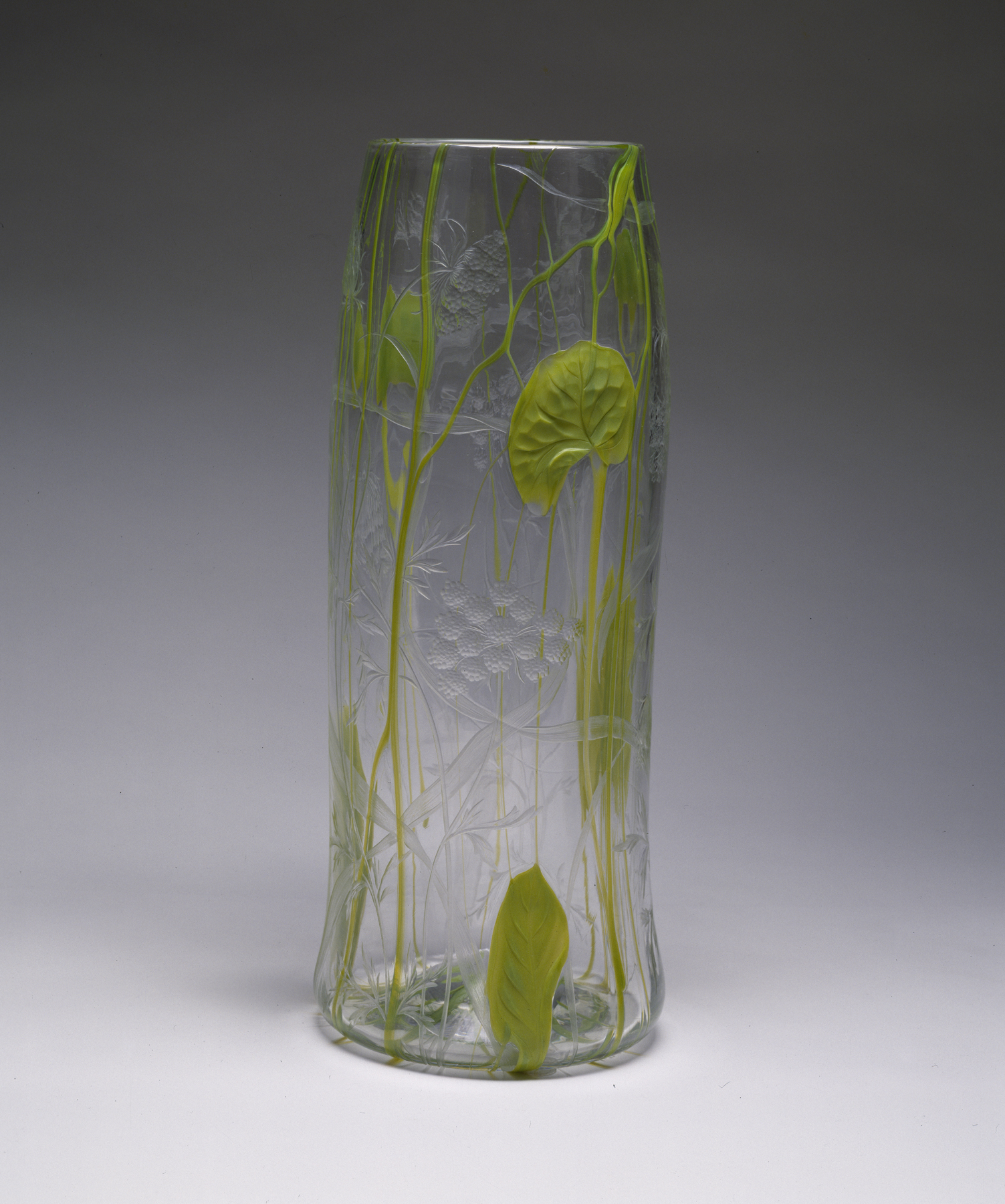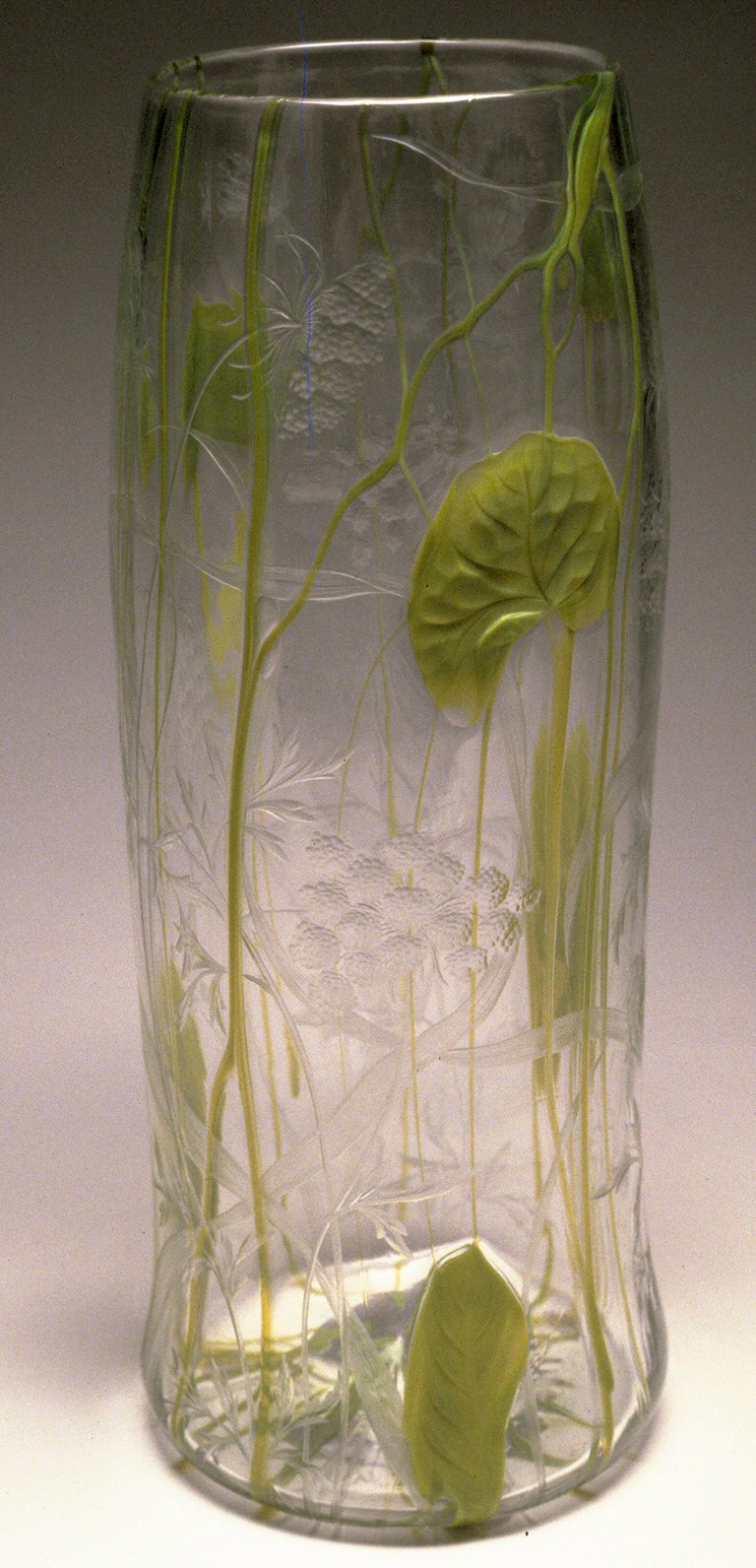Tall Vase with Lily Pads and Wild Carrots
(18th and 19th Centuries )
Tiffany was the foremost American exponent of the Art Nouveau movement, which rejected historical styles and called for a re-examination of vegetal and zoological motifs, particularly as seen in Japanese art. He developed it into a sensuous, organic style. The Tiffany Glass and Decorating Company, founded in Corona, New York, in 1892, was particularly known for its "Favrile" glass, which imitated the iridescent sheen that ancient Roman glass acquired after being buried for centuries. This vase is thought to have been engraved by Fredolin Kreischmann.
Provenance
Provenance (from the French provenir, 'to come from/forth') is the chronology of the ownership, custody, or location of a historical object. Learn more about provenance at the Walters.
Henry Walters, Baltimore [date and mode of acquisition unknown]; Walters Art Museum, 1931, by bequest.
Exhibitions
| 1998-1999 | A Discerning Eye: Nineteenth-century Drawings and Watercolors. Academy Art Museum, Easton. |
| 1998-1999 | Botanical Delights: Floral Motifs in 19th-Century Art. Government House, Annapolis; Strathmore Hall Art Center, North Bethesda; Academy Art Museum, Easton. |
| 1989 | Louis Comfort Tiffany: Revelations of True Beauty. Baltimore Museum of Art, Baltimore. |
| 1982 | 3000 Years of Glass: Treasures from The Walters Art Gallery. The Walters Art Gallery, Baltimore. |
| 1979 | Art Nouveau from Maryland Collections. Baltimore Museum of Art, Baltimore. |
Geographies
USA (Place of Origin)
Measurements
H: 12 3/8 x W: 4 15/16 in. (31.5 x 12.5 cm)
Credit Line
Acquired by Henry Walters
Location in Museum
Not on view
Accession Number
In libraries, galleries, museums, and archives, an accession number is a unique identifier assigned to each object in the collection.
In libraries, galleries, museums, and archives, an accession number is a unique identifier assigned to each object in the collection.
47.385




